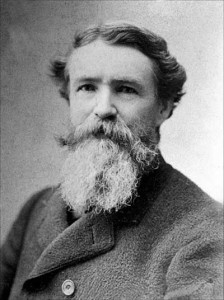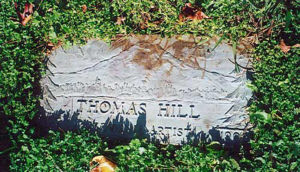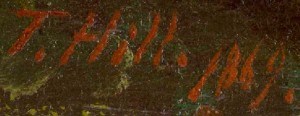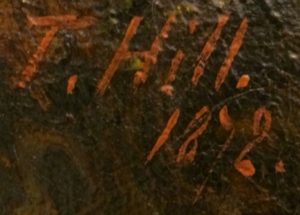Thomas Hill came to Taunton, Massachusetts, from England in 1841. He studied art with Rothermel at the Pennsylvania Academy of Fine Arts in 1853 and with P. Meyerheim in Paris in 1866. However, Hill was primarily self-taught. He worked as a carriage painter in the 1840s. He worked in San Francisco during the years 1861 to 1866 and 1871 to 1908. He was in Boston during the years 1867 to 1871. He often traveled to New England in late 1870s and early 1880s.
Hill exhibited at the following: Art Union, San Francisco, 1865 (prize); Centennial Expo, Philadelphia, 1876 (medal); Pennsylvania Academy of the Fine Arts, 1884 (medal). During his career, he received 31 awards. His work has been preserved at the Denver Art Museum, the California Capitol, the Los Angeles Museum of Art, the Worcester Museum of Art, the University of Kansas Museum of Art, the Oakland Museum of Art, and the Currier Museum of Art. He helped V. Williams found the San Francisco School of Design in 1874. He was commissioned by Muir to paint in Alaska in 1887. He produced nineteen illustrations for Muir’s “Picturesque California” in 1888.
Hill is best known for his majestic landscapes of California, especially Yosemite. His brother, Edward Hill, painted throughout his life in the White Mountains, but remained in the shadow of his famous brother, Thomas.
Thomas Hill was a member of the Boston Art Club and the San Francisco Art Association. Hill’s last known address was San Francisco. He is buried at the Mountain View Cemetery in Oakland, California.
Signatures
- 1869
- 1870
- 1872
Reference
Direct from Nature. The Oil Sketches of Thomas Hill.






